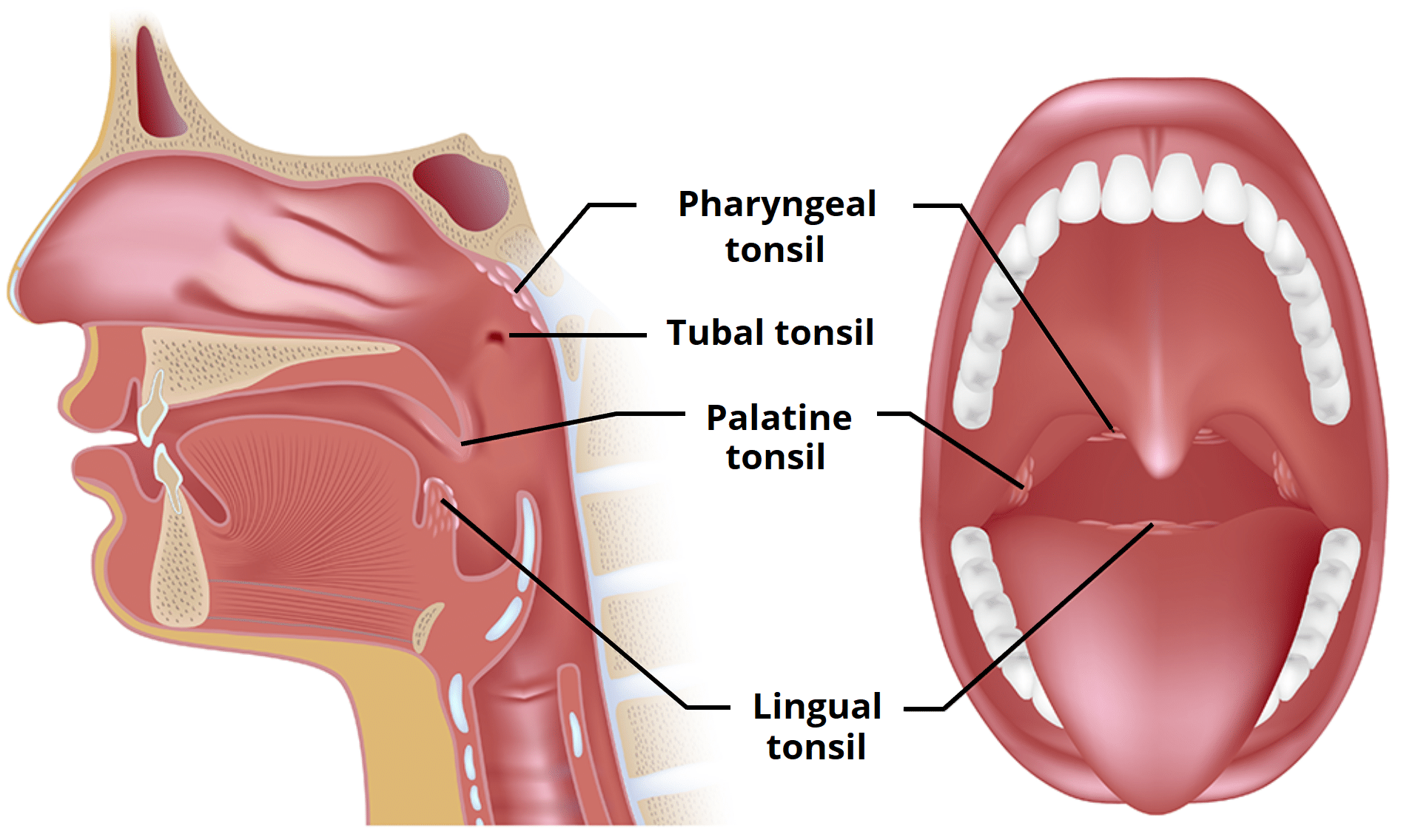

Waldeyer’s ring is a complete ring of subepithelial lymphoid tissue comprising of the palatine tonsils, adenoids, lingual tonsils, tubal tonsils and the lateral pharyngeal bands.
1) Palatine tonsil.
2) Nasopharyngeal tonsil (adenoids).
3) Lingual tonsil present on the posterior 1/3 of tongue.
4) Tubal tonsil near the Rosenmuller’s fossa.
5) Lateral pharyngeal bands.

1. It is an important part of mucosal associated lymphoid tissue (MALT) which processes antigen and presents it to T-helper cells and B-cells.
2. This ring acts as a protective barrier for the lower respiratory tract.
3. Waldeyer’s ring is constantly exposed to new antigenic stimuli. Production of Immunoglobulins: The tonsillar tissue produces IgG, IgA and IgD. These immunoglobulins are secreted into pharynx and their output is increased in response to a wide variety of inflammatory processes.
4. The tissue of Waldeyer’s ring undergoes physiological hypertrophy during early childhood as the child is exposed to increasing number of antigenic stimuli.
5. Next to the gastrointestinal tract, Waldeyer’s ring is a common localization for extranodal lymphomas. Waldeyer’s ring is considered for staging of malignant lymphomas according to the Ann Arbor classification.
Regression:
This lymphoid tissue reaches its maximum size by 10 years of age and then gradually regresses.